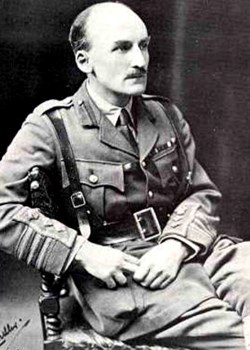The Military Papers and Correspondence of Major General J.F.C. Fuller 19-16 -1933,
- Home
- World War I Book Reviews
- The Military Papers and Correspondence of Major General J.F.C. Fuller 19-16 -1933,

The Military Papers and Correspondence of Major General J.F.C. Fuller 19-16 -1933, £20.00 to members.
Army Records Society, 394 pp. footnotes, bibliog. index.
ISBN 978 0 7509-8365 5
Professor Alaric Searle
The Army Records Society has been publishing an annual volume for its members every year since 1985 on a wide range of topics from the Napoleonic Wars to events in Kenya 1953 – 1955.
‘Boney’ Fuller’s papers and correspondence is the fourth book on aspects of the Great War published by the since 2014. (Others comprise: Military Intelligence from Germany, 1906 – 1914, The Diary of Corporal Vince Schurliffe 1914 – 1918, and Liaison: General Pierre Vallieres at British Headquarters 1916-1917).
Both in this work and previous biographies, Fuller emerges here as a thinking and questioning soldier and student on military matters. His drive, cocky intemperance, made him a difficult subordinate. What also emerges is that like Henry Wilson and others similarly self-assured he was a gossip.
One cannot fail to recognise the length and breadth of the editor’s research in locating Fuller’s widely, internationally, spread papers. Nor ignore Searle’s insight in the introductions to each chapter. That said, I would have welcomed far greater editorial input into contextualising his correspondence and his thinking and real importance as a thinker and theorist on military matters and science. His ideas, his concepts, frequently spelled out in letters to Liddell Hart, are often complex. The pair shared thinking one with another, in discussion, disagreeing and correcting praising and criticising each other’s work.
Of the two, LH - initially the student military thinker - and Fuller the true professional - finally both emerge from their collaborative correspondence with little credit and as and hugely egotistical.
As their relationship deteriorates, Fuller advises LH that his book on Sherman is “… big. But not so good as his your ‘Scipio’, and “… in my opinion the book wants to be condensed”. He also notes, “I believe anyone can write history if they collect sufficient facts …” Fullers concluding sentence rings perceptive bells; “… take the present official history. Facts are all correct but the atmosphere of reality is completely wanting, as a matter of fact one gets a far better psychological picture of the last war from novels than from Edmunds”
The work of an editor on his subject’s letters and papers is far from easy. However, I judge that, frequently, understanding the thinking Fuller outlined his papers and correspondence demands considerably greater editorial input and contextualisation. Matters of strategy, tactics and forward looking military thinking are complex and this book have benefited from greater editorial input about these areas than is provided by Professor Searle.
Fuller was a man of many parts and, perhaps understandably, the book concludes in 1933, when he left the army. Ahead lay membership of the British Union of Fascists and related bodies, admiration, if not for Hitler, then for his pre-war implementation of Fuller’s concepts. Indeed, he was considered fortunate not to have been interned during World War 2. Unlike Henry Williamson, Fuller seems fortunate to be remembered for his writing and influential thinking, rather than other aspects of his nature and what many, including contemporaries, judged somewhat more than a flirtation with the dark side.
David Filsell





